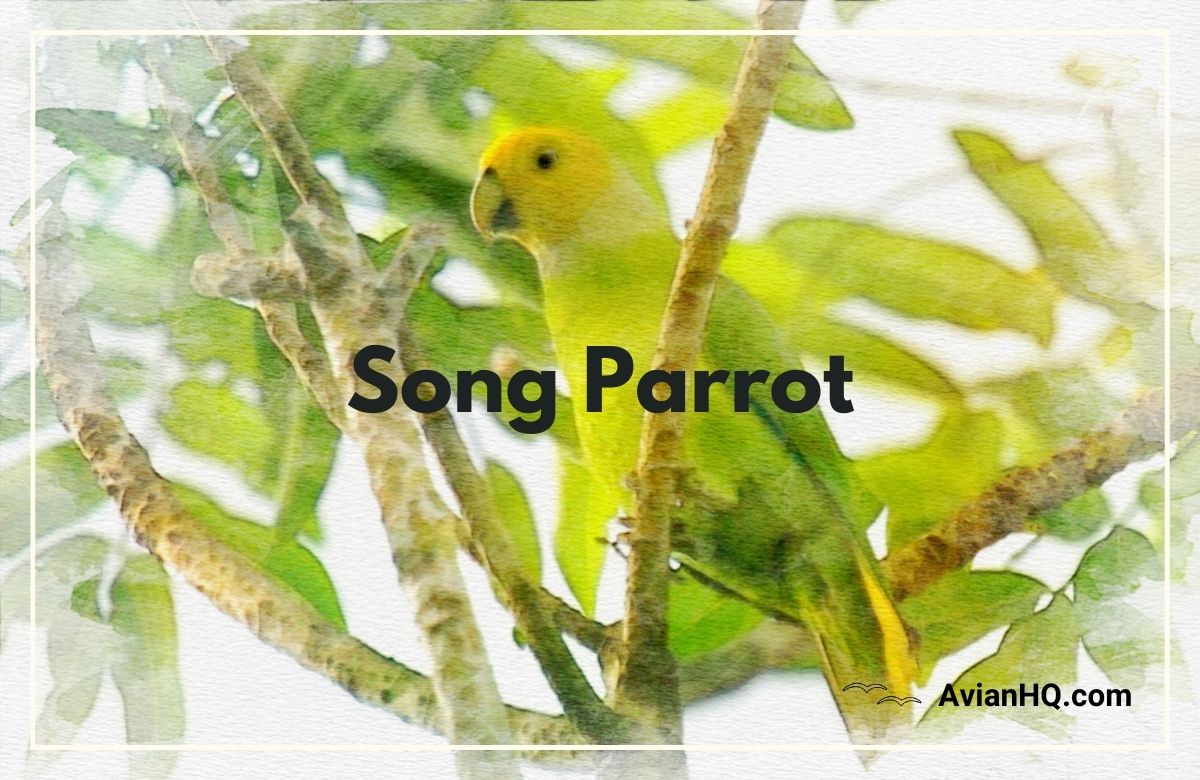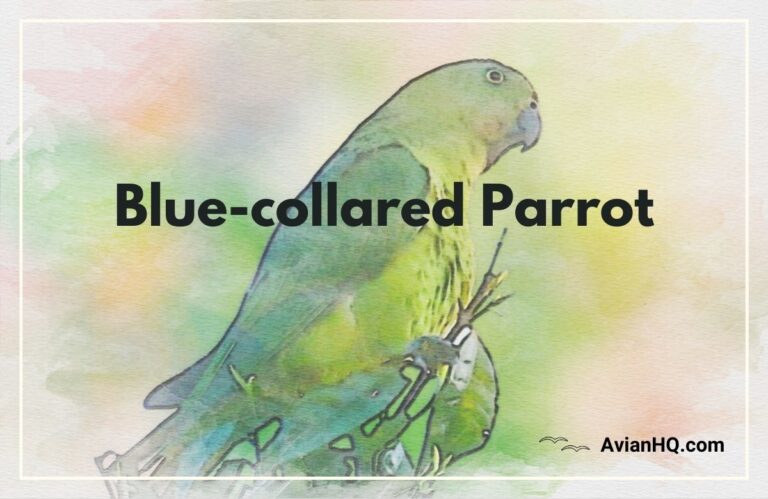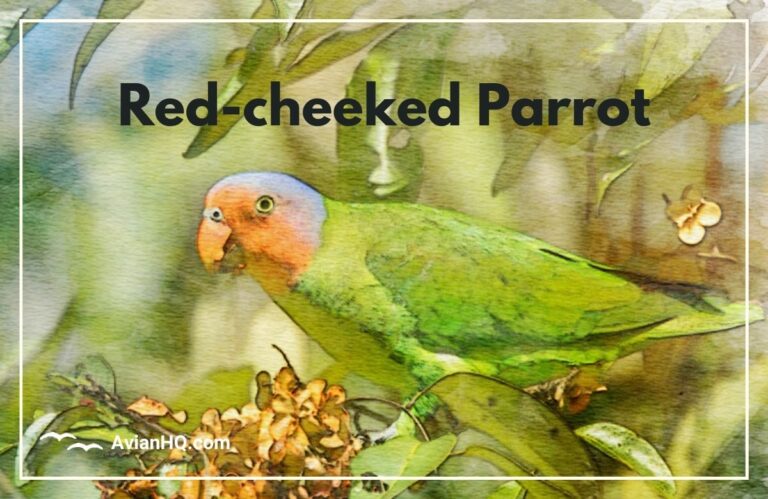Song Parrot (Geoffroyus heteroclitus)
With its bright yellow head and melodious song, the song parrot (Geoffroyus heteroclitus) is a beautiful and vocal member of the parrot family. Also known as the singing parrot or yellow-headed parrot, this medium-sized parrot inhabits the islands of Papua New Guinea and the Solomon Islands.
While not the flashiest or most popular parrot species kept as pets, the song parrot has an attractive appearance and pleasant personality that has endeared it to the few aviculturalists who work with the species. In the wild, these parrots live in small flocks and spend their days noisily foraging for fruit and seeds as their whistled calls ring through the forest canopy.
In this article, we will explore the natural history of the song parrot, including its taxonomy, physical appearance, geographic distribution, habitat, diet, behavior, reproduction, conservation status, and potential as an aviary bird.
History and Naming
The song parrot was first described scientifically in 1841 by French zoologists Hombron and Jacquinot, who gave it the binomial name Geoffroyus heteroclitus. It’s genus name Geoffroyus honors the French naturalist Étienne Geoffroy Saint-Hilaire, while the specific epithet heteroclitus is derived from Ancient Greek words meaning “irregular” or “variable”.
This species is placed in the broad parrot family Psittacidae and the subfamily Psittaculinae, which contains the Asian and Australasian parakeets. Some taxonomists believe the Geoffroyus genus of parrots is closely related to the genus Psittacula, which includes ring-necked parakeets and Alexandrine parakeets.
The song parrot has two recognized subspecies:
- G. h. heteroclitus – Found in the Bismarck Archipelago, Buka, Bougainville, and the Solomon Islands except Rennell Island
- G. h. hyacinthinus – Restricted to Rennell Island in the southeastern Solomons
Physical Appearance
The song parrot is a medium-sized, mostly green parrot measuring around 9.75 inches (25 cm) long and weighing 5.6-6.8 ounces (160-195 grams).
Key features include:
- Bright yellow head in adult males (grey head in females)
- Collar around neck is grey/lilac in males, sometimes blue in females
- Blue patch on underwing coverts
- Yellow upper mandible, grey lower mandible
- Grey eye rings
- Yellow irises in adults
The two subspecies differ slightly in appearance:
- G. h. heteroclitus: Male has grey/lilac collar, female has blue collar.
- G. h. hyacinthinus: More extensive mauve/blue collar in males, darker blue-grey head in females.
Juveniles resemble adult females but have a pale grey bill, white eye rings, and grey irises. Their crown may be washed with green.
The song parrot has a stocky body shape and short tail typical of the Geoffroyus genus. In flight, its pointed wings and short tail give it an agile appearance.
Geographic Range and Habitat
The song parrot is endemic to the islands of Papua New Guinea and the Solomon Islands in the southwestern Pacific. Its range spans:
- Bismarck Archipelago
- Buka and Bougainville Islands
- Solomon Islands, except Rennell Island
The two subspecies have slightly different distributions:
- G. h. heteroclitus: Found in the Bismarck Archipelago, Buka, Bougainville, and most of the Solomon Islands
- G. h. hyacinthinus: Restricted to Rennell Island in the Solomons
This species inhabits lowland and hill forests up to elevations around 1,968 feet (600 m), and occasionally as high as 5,740 feet (1,750 m). Its natural habitat consists of:
- Subtropical or tropical moist lowland forests
- Intact primary forest
- Secondary growth forest
- Partially cleared forest areas
- Forest edge
- Rural gardens
The song parrot has adapted well to some habitat degradation but remains reliant on forests. Its range covers an area of approximately 15,400 square miles (40,000 sq km).
Diet and Feeding
Wild Diet
In the wild, the song parrot is mostly frugivorous, feeding on various fruits, seeds, and flower parts:
- Small seeds
- Fruits such as figs, berries, and oranges
- Buds and blossoms (e.g. Cryptocarya species)
- Unripe bananas (a dietary staple)
Captive Diet
In captivity, song parrots should be provided with:
- Ripe and unripe banana pieces
- Other chopped fruits like apple, pear, orange
- Lory nectar formulas
- Rusks or biscuits soaked in milk
- Small amounts of millet spray, canary seed, oats
- Sprouted seeds like sunflower
- Complete pelleted diets if accepted
- Fresh water for drinking and bathing
Behavior and Ecology
Social Behavior
The song parrot is usually seen alone, in pairs, or in small flocks of up to about 10 individuals. They have been observed mixing with other parrot species including cardinal lories and duchess lorikeets.
These parrots are described as quiet and difficult to detect when perched silently in dense vegetation. They become very vocal and noisy when in flight or feeding.
Vocalizations
The song parrot’s calls are loud and raucous and is named for it’s unique two-note whistled song given by perched birds. Their contact calls are high-pitched whistles given in flight.
Breeding and Nesting
Breeding activities peak in October.
Song parrots nest in tree cavities or old stumps, laying their eggs on a layer of decayed wood dust. Clutch size is unknown.
Seasonal Movements
No seasonal migrations are reported, but the parrots may move to lower elevations in winter.
Conservation Status
The song parrot is evaluated as Least Concern on the IUCN Red List of Threatened Species. It’s global population size is unknown, but the species is described as:
- Very uncommon on New Britain and New Georgia
- Locally common on Santa Isabel and Guadalcanal
- Uncommon to moderately abundant on Bougainville
The population trend appears stable and the species is not believed to approach the thresholds for a threatened category.
It is listed on CITES Appendix II, indicating some level of trade monitoring is required. Habitat loss is a potential threat but has not been severe across its range.
While the song parrot has a restricted range, its adaptability helps offset risks from deforestation. Ongoing habitat protection is needed to ensure adequate forest remains across it’s island habitats.
Captivity
The song parrot is not commonly kept in aviculture but, has potential as an aviary bird.
History in Captivity
This species has likely been kept as cagebirds on its native islands for centuries. But, it remains scarce in European and American aviculture. Only a handful of zoos and private breeders work with the song parrot.
Captive Status
The worldwide captive population is very small. No robust captive breeding programs exist for the song parrot.
Longevity
The lifespan of song parrots in captivity is unknown. Based on related species, their average lifespan is likely 10-15 years or more with proper care.
Conclusion
The song parrot is a little-known island endemic with a striking yellow head and melodious calls. While not currently threatened, this species merits continued monitoring and habitat protection across its restricted insular range.
With a pleasant appearance and vocal nature, the song parrot shows potential for aviculture. However, wild populations should be safeguarded as a conservation priority. Captive breeding initiatives could help establish a reserve population to buffer against any future declines.
From the forests of Bougainville to the gardens of Honiara, the whistled notes of the song parrot brighten its island homes. As pressures grow on the biodiversity of Melanesia, the survival of this species and its habitats should remain a focus for conservation partners across the region.





